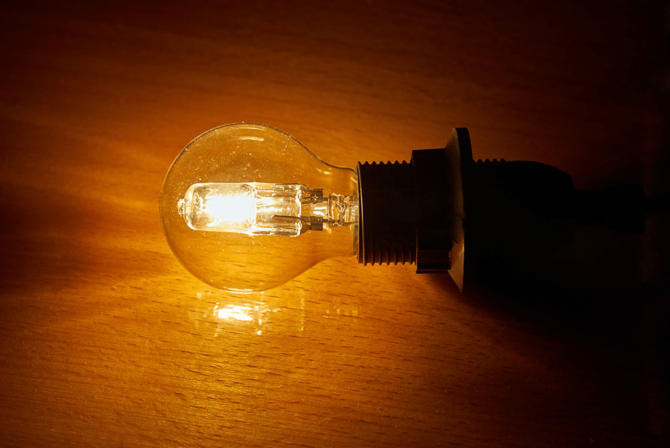
Top Causes Of Unsteady Lighting
Flickering lights may add a festive touch during holidays, but when the flicker isn’t intentional, it’s more than just annoying — it could signal an underlying issue. At Champion Home Services, we understand that dealing with flickering lights can be perplexing.
From subtle, fixable problems to potential signs of more significant electrical issues, the reasons behind flickering lights are varied. Our team is here to guide you through the troubleshooting process, ensuring your home remains well-lit and safe.
If you’re tired of wondering, “Why are my lights dimming and brightening?”, we’re dedicated to shedding light on the issue and providing expert solutions. Join us as we delve into the common causes of flickering lights and explore the steps to restore a steady glow to your San Antonio home.
What Causes Lights To Flicker?
Understanding why lightbulbs flicker before they burn out is a common question among homeowners. The mystery behind flickering lights often lies in a variety of common culprits. Fluctuations in voltage, loose wiring or a high electrical load can all contribute to the irritating dance of light instability.
Voltage irregularities — especially in older homes — can lead to inconsistent power supply, causing lights to flicker unexpectedly. Loose or faulty wiring is another frequent offender — when connections become compromised, it disrupts the steady flow of electricity.
Additionally, overloading circuits with too many appliances or fixtures can strain the electrical system, resulting in flickering lights. Understanding these potential causes is the first step in addressing the issue and restoring a consistent, reliable glow to your living spaces.
Simple Fixes For Flickering Lights
Before jumping to conclusions about lightbulbs flickering, consider exploring some simple fixes for flickering lights.
Start by checking if your lightbulbs are securely screwed in — loose bulbs can cause flickering due to inconsistent connections. It’s also worth examining the wattage of your lightbulbs. Using bulbs with a wattage higher than the fixture’s recommendation can lead to flickering.
Additionally, swapping out traditional incandescent bulbs for LED alternatives often resolves flickering issues, as LED bulbs are more energy-efficient and less prone to voltage fluctuations. These straightforward steps can often remedy the flicker without the need for extensive electrical intervention.
Signs It’s Time For Professional Electrical Assistance
While some flickering issues can be resolved with DIY solutions, there are specific signs that indicate the need for professional electrical assistance. Consider seeking help if you observe:
- Lights flickering alongside dimming or brightening without apparent cause.
- Persistent flickering, even after attempting simple fixes.
- Detection of burning smells, sparking or unusual sounds emanating from electrical outlets.
These signs collectively suggest potential deeper electrical issues within your home’s wiring. If any of these indicators are present, it’s crucial to contact a qualified electrician promptly to prevent safety hazards and ensure the overall well-being of your electrical system.
Illuminating A Flicker-Free Path To Well-Lit Living Spaces
To achieve consistently well-lit living spaces, consider a comprehensive approach that goes beyond quick fixes.
Upgrading your lighting fixtures to LED bulbs not only enhances energy efficiency but also provides a stable and reliable light source. Conducting a thorough inspection of your home’s wiring and addressing any underlying issues can further contribute to a flicker-free environment.
Champion Home Services specializes in guiding homeowners through these improvements, offering expert advice and professional services to illuminate a path toward well-lit, worry-free living spaces. With our assistance, you can enjoy the benefits of reliable lighting and a safer, more comfortable home.




